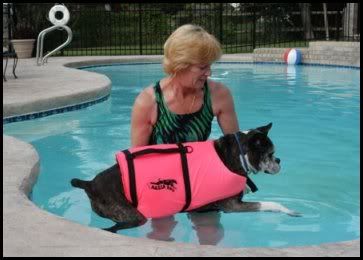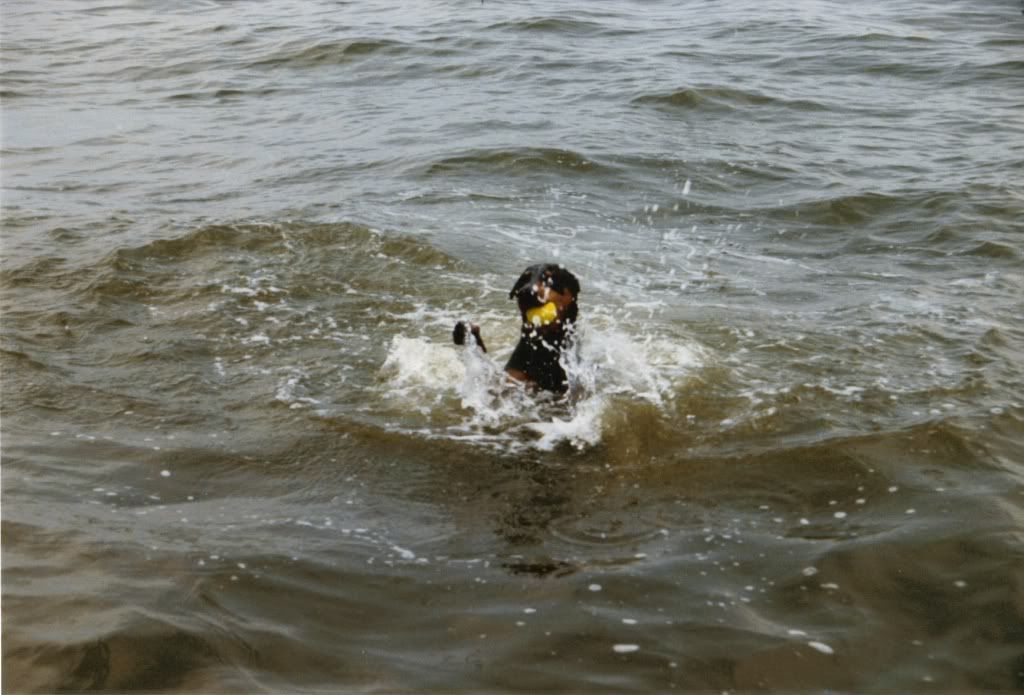Archive for the ‘safety’ Category
WHY URBAN METAL ISN’T PRECIOUS
by Blair Sorrel, Founder, www.StreetZaps. com
Of course, you want a worry-free walk year-round, so adopt this simple strategy:
EYEBALL THE BLOCK, AVOID A SHOCK.
Take just a few seconds to survey the immediate surroundings and make your trajectory toward a non-conductive surface, ie., plastic, wood, cardboard, rather than risking any metal or electrical fixture. The lowly, free-standing garbage bag, is you and your dog’s best friend, most of the time, unless it’s snowed and salted. Consider the safer, hardware-free RopeNGo leash and harness to help shield against a possible zapping and for greater peace of mind.
CONTACT VOLTAGE DOESN’T DISCRIMINATE BY GENDER.
Your pooch’s sex is irrelevant. True, the most gruesome scenario is that of a male dog electrocuted by its ricocheting urine, but contact voltage is just that, mere interaction with an energized surface. Our poster girl pooch sidled a fire hydrant and limped for five days. Intuit your dog’s cues, if resistant to an area, choose an alternative route. Elude potentially live work areas or carry your canine, if necessary. Opt for indoor products such as Potty Park or Wee-Wee Pads, if external conditions are ominous. Dog booties can leak and make your pooch even more vulnerable.
ARE YOU PLAYING RUSSIAN ROULETTE WITH YOUR DOG?
Any of these fixtures might be dangerous, so again, choose non-conductive where and when possible. (link to home page fixtures listed below and/or the visuals page):
View All StreetZaps’ Home Page & Safety Images
– Street & Traffic Lights can leak if damaged internally, even if the compartment is fully closed and the light is not illuminated
– While wooden blocks anchor Scaffolding or Sidewalk Sheds, be aware that sloppy wiring by a contractor and/or the use of lighting equipment which is NOT WATER- PROOFED or even suitable for outdoor usage, may still shock a passerby.
– ATM Vestibules
– Decorative Lighting
– Dog Booties may increase
the risk of a shock
– Electrical Boxes
– Fire Hydrants
– Fire Police Call Boxes
– Manhole Covers
– Muni Meters
– Phone Booths
– Service Boxes
– Street Light Boxes
– Traffic Boxes
– Work Areas
After all, why chance it when there’s a choice?
BETWEEN YOU, ME, AND THE LAMPPOST.
Tampered equipment can become pernicious so please map (Report Form) damaged fixtures and known hot spots to admonish other pedestrians and alert the utility and transportation department.
By Nancy E. Hassel, LIPetPlace.com
Life saving pet first aid course
What do you do if your dog or cat is choking or not breathing? Or if your pet needs first-aid immediately but you are no where near a veterinarians office? Often times as pet owners we don’t even consider these things in our daily lives, but injuries and emergency situations can and do happen to our pets. It’s better to be prepared and know what to do for your pet’s sake. Luckily for pet owners here on Long Island and in Queens and Brooklyn we have a certified Pet CPR and First Aid instructor that proactively offers classes teaching life saving techniques and first aid for pets. Robyn Elman, who is also the President of In Home Pet Services, Inc., (http://www.inhomepetservices.com/), is the only certified ‘Pet Tech’ Instructor in the Tri-state area is offering these classes to pet owners, pet professionals, and anyone that wants to learn these very important pet life saving procedures.
Robyn said, “It is so important for not only pet industry professionals to learn Pet first Aid & CPR, but also first responders like police officers and firemen and women. Often times a pet may not survive an emergency situation because the people initially tending to them may not know what to do. According to the American Animal Hospital Association, 1 out of 4 pets would survive if just one pet first aid technique was applied prior to getting the pet to emergency veterinary hospital.” Robyn is certified by Pet Tech National Training Center based in Carlsbad, CA and works with different pet organizations and businesses throughout Queens, Long Island, NYC and other boroughs. Robyn has been teaching these classes for over 3-years.
Using a life sized stuffed animal dog, this class will teach participants how to: restrain an injured or ill pet; CPR and rescue breathing; bleeding injuries; heat and cold element injuries; bandaging; insect bites and much more. As a way to give back, Robyn offers a portion of the proceeds from the class to non-for-profit animal organizations that want to be involved. Pet owners in the area are in luck because the next class will be offered this Saturday, October 2nd from 9:30 am – 1:30 pm at Best In Show Pet Resort in Mineola, (244 Herricks Road Mineola, NY 11501). Robyn is thrilled to once again be working with Pet Safe Coalition (www.petsafecoalition.org) for this class and a portion of the proceeds of the class will go to this very important Long Island pet organization. A recent class participant said this, “The instructor was great, and the material really covered a lot of subjects. We even practiced CPR on the stuffed animals. I would reccomend it to any pet owner,” stated Alice Laby.
To register for this class, individuals can call (718) 347-7387 or send a check or money order for $85.00 payable to In Home Pet Services, Inc. and mail to: 88-25 247th Street, Bellerose, NY 11426 – or pay cash at the door – but registration is necessary. Each participant will receive a take-home reference manual and a certificate that they completed the course valid for 2-years. For more information about this course or about In Home Pet Services, go to: www.inhomepetservices.com.
By Nancy E. Hassel, LIPetPlace.com
Pets & Hurricane Safety
With Hurricane Earl churning up the sea and seems to be heading towards the US coastline, it brings the question to light, “what would I do in a disaster with my pet? Where would I go? Can my pet come with me to a shelter?” Being and island without a real “escape” route in case of a natural disaster like a hurricane or bad Nor’easter this is something all Long Island pet owners should be aware of.
In Suffolk County we are fortunate that if there was a natural disaster there are 3 dedicated spaces that are pet-friendly emergency shelters – acting as a safe haven that could house dogs, cats, birds and their owners in case of evacuation in a disaster.
In the wake of Hurricane Katrina in 2005, Suffolk County Executive Steve Levy made sure that people would have a place to go to with their pets. It would depend on what shelter would open, in regards to where the disaster happened. In other words, if the disaster happened on the East End, then a space near Yapank would open, and if it was in Smithtown one close to that area would open. You can find out more information about Suffolk County by going to their Office of Emergency Management here: http://suffolkcountyny.gov/departments/firerescue.aspx and useful pet information here: http://suffolkcountyny.gov/Home/departments/firerescue/Office%20of%20Emergency%20Management/Information%20for%20Pet%20Owners.aspx
Unfortunately in Nassau, there are not any dedicated pet-friendly emergency shelters at the moment. However, there is a non-for-profit organization called Pet Safe Coalition, Inc. (http://www.petsafecoalition.org/) who is working to help educate the public and help pet owners keep pets safe when a disaster strikes. They are also raising awareness about pet safety in disasters and provide informational resources to public officials.
“Sheltering plans in disasters will accommodate only a fraction of the pet population in Nassau County so the most important thing an individual pet owner can do is to make plans for their own pets,” said Nancy Lynch President, of Pet Safe Coalition.
Things all Long Island pet owners should do in advance of any emergency or natural disaster is have a proper collar on your dog or cat with ID, have a pet first aid kit in your car and home with at least a weeks worth of pet food, canned is best, keep an extra leash and collar with ID in your car for each pet, (or with the pet first aid kit), in case you have to get out in a hurry and your pet doesn’t have their collar on. You should also have an in-case of fire or emergency sticker on your front door or window stating how many pets are inside and what type. This way if you were not home, neighbors or emergency officials will know there may be a pet inside.
Nancy Lynch also added to the following plans pet owners should make: 1.) Ask friends, relatives, breed club members, groomers, trainers or others outside the affected area whether they could shelter your animals. 2.) Contact hotels and motels outside of your immediate area to check policies on accepting pets. Ask if a no pet policy could be waived in a disaster. 3.) Make sure your pet is a more welcome guest by having a crate and carrier for each animal. 4.) As hurricane approaches call ahead to confirm emergency shelter arrangements and get directions. 5.) Don’t wait until the last minute to evacuate. Make sure your gas tank is full and bring your cell phone and car charger. And develop a plan and practice it.
Also if you are heading to the beach within the next few days to check out the surf, and plan on bringing your dog with you, be to keep him or her leashed. Waves in general can be dangerous for any dog and with rip tides and pounding waves – dogs don’t know not to go in the water. Be a responsible dog owner, and please keep Bella or Max on a leash for their safety.
June 25, 2010
by Nancy E. Hassel, LIPetPlace.com
Hitting the road with your pet
Summer time and road trips go hand in hand and many people now travel with their pet. It is great to be able to bring your pet, but you should prepare properly so in case of an emergency or if your car breaks down, your pets will be safe. Even if you are just taking a road trip to the East End of Long Island it is good to be prepared. Some things to consider are:
- Knowing where the local emergency veterinarian is where you are traveling to.
- Have an extra dog leash, collar, foldable cat carrier, pet food, water and water bowl.
- If your pet is not used to being in the car accept for going to the vet or groomers office, then think about taking them on shorter trips to get them used to it a few weeks prior.
- Rescue Remedy is a great product to help calm a pet while on the road, and is a natural product.
- Traveling with a dog can be a lot of fun, but safety even inside the car is important. Crating a dog while in the car works great, and many people who show dogs, this is the only way how they will travel with their dog while on the road. There are also seat belts for dogs these days, mainly harnesses that have seatbelt attachments.
- Bring a portable pet first-aid kit and have any medication your pet is on with, as well as medical records from the pets vet.
- Make sure where you are traveling too does not have breed restrictions on dogs, or species of certain reptiles. Some areas can confiscate a breed of dog or reptile that may be outlawed. Check state and local laws before you leave town with your pet.
- Staying at a hotel? Make sure it is pet friendly, highly recommend for pets and has amenities for pets nearby or has a listing for you when you arrive.
- Parks – make sure if you decide to go into a park with your pet, that the pet is actually allowed there first. Camping? Some parks require a lot of paperwork if you are bringing a dog, i.e. proof of dog license, rabies vaccination proof and more. Check first!
- Leaving your pet home? Book a pet sitter or day care in advance as they fill up fast in the summer months. You can find local places here:
A few other things to take into consideration are, if the weather is different where you are traveling too. Is it hotter? Pets can have different reactions to such. Never brought your pet with you before? Sometimes a new environment can throw off even the calmest pet, be sure to watch for signs of distress. Just because you’re eating out, new foods or adding things to your diet, doesn’t mean you should do the same with your pet. Try to stick to their normal eating schedule and regular food and treats they eat at home. Most of all enjoy your vacation with your pet, but these above tips should help that!
June 6, 2010
by Nancy E. Hassel, LIPetPlace.com
Did you know that not all dogs can swim? Most people think that swimming comes naturally to dogs. We have all seen the funny videos of little dogs doing the doggie paddle in the air when held above the bath water by their owners, but that movement doesn’t mean they will be able to swim, stay afloat or tread water.
Being on an Island, dog owners should consider this when out at the beach, near a lake with their dogs, or hanging out by the pool. We are lucky that nowadays there are life jackets made for dogs, scamper ramps to help dogs out of a pool and dog trainers willing to teach dogs to swim. But that doesn’t mean your dog is going to like it or have a swimming technique come naturally to them.
Some things dog owners should never do when trying to get your dog to swim, is force your dog into the water by dragging or throwing a dog in. It’s not only cruel, but can scare a dog or make the dog fearful of water. If you have a puppy, you want to start young introducing the pup to the water, always, always monitored by an adult and never left alone near a body of water. Keep the puppy leashed, and it you have a dog life jacket (properly fitted for the dog’s size), have the puppy wear it. You can get the puppy accustomed to wearing it, by having the dog wear the vest for a few minutes at a time while indoors or on a short walk. While the puppy is leashed you can go into a pool or in the calm water on a shore and just have the pup wade in the water along side of you. Let the dog go in on its own or if you have a dog or friend with a dog that likes the water – that will often help your puppy have less fear.
When teaching the puppy how to swim, make sure that you eventually take the life vest off during lessons for short periods of time, so the dog learns to become buoyant on their own. Owners can assist by helping hold up the dog’s body from the mid to back section of the dog:

Photo, American Boxer Club.
Some dog breeds do take much more naturally to the water as that is what they were bred for. Labs, Goldens, Portuguese Water Dogs, Chesapeake Bay Retrievers, to name a few are natural water dogs, but they still may need help along the way learning. Some breeds are not designed for long swims or swimming at all. My Pit Bull Max, is an excellent swimmer, but his mouth is so wide that he tends to inadvertently swallow a lot of water while swimming. Which can make him sick, so his swim time is never more than 10 to 15-minutes, and that is in and out of the water.
If you are unsure how to teach your dog to swim, the best thing to do is to hire a skilled dog trainer who knows how to do this properly. (Interview the trainer to be sure they know how to teach this). In teaching a dog to swim it’s best to be in the water with the dog as some dogs can panic, and you or the dog trainer can help assist them out.
Another thing to consider is if you are at the ocean beach, be careful of throwing a ball or stick into rough surf – this could easily knock down a dog and injure the dog. Dogs can easily be tossed around by a wave. Some bay beaches have a quick drop off, and if your dog is not used to swimming, a deep drop off can be dangerous. While we all want our dogs to cool off, not every dog is suited to swim. So take steps to enjoy the water with your dog, but safety first!
Writer note: The life jacket can also be a safety precaution while out kayaking or boating with your dog. Also a long line, not a retractable leash, a long leash made of cotton that can be purchased at most pet stores in 10, 15, 25 and 50 in length, is a great tool while teaching a dog to swim. If the dog is over enthusiastic and not on a leash the dog can keep going and going. Believe me I have witnessed this in person. Funny at first, scary when the dog was pretty far out into the bay, luckily for the owner the dog turned and finally headed back. If the owner had a long line, he could have gently pulled the dog back towards the shore.
I owned a Doberman who was not a graceful swimmer at all, and her rear end always tended to sink, so her doggie paddle was more in the air than in the water. She also jumped off the dock once, and we had to coax her around the shore. She did it, but was panicked and exhausted when she came out. While she loved the water, she was smart enough to know her lack of swimming capability and only went out so far (where she could still stand!), not all dogs are that smart!

Don’t let this picture fool you, her back paws were touching here!
And this was clost to the shore of the bay.






Categories
Archives
Blogroll
Meta